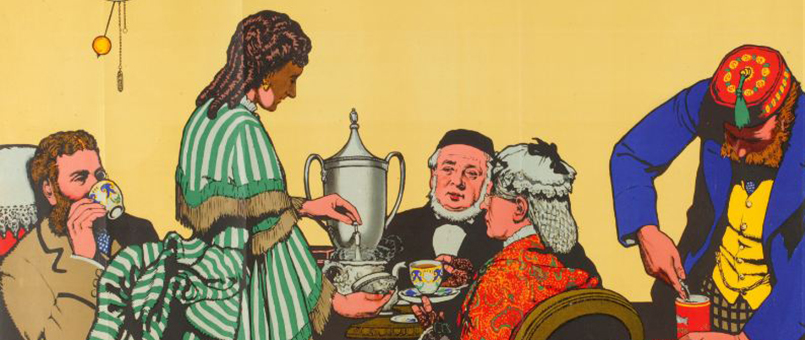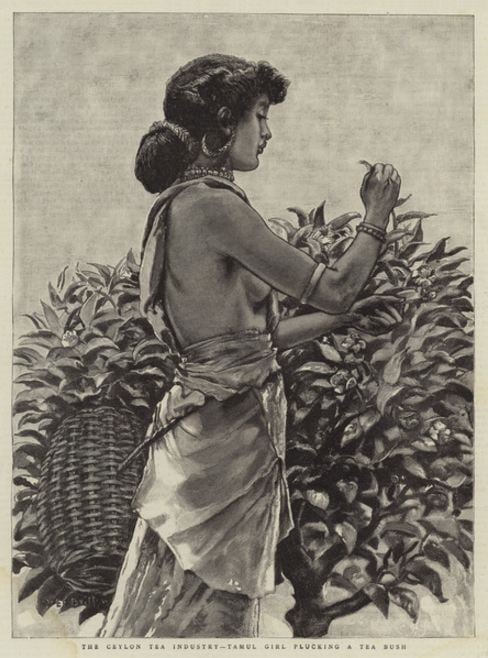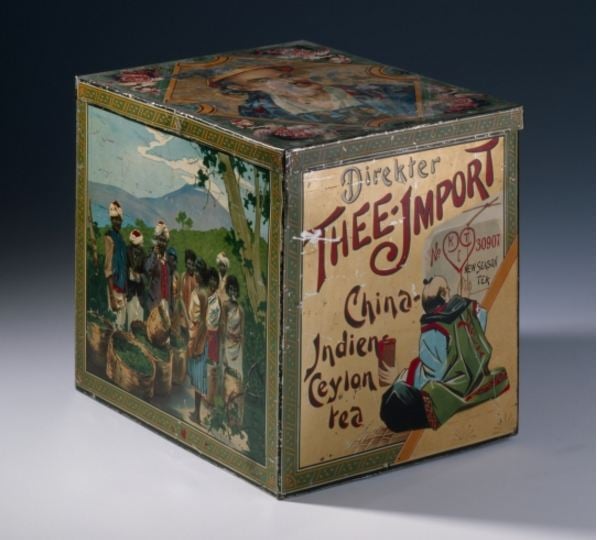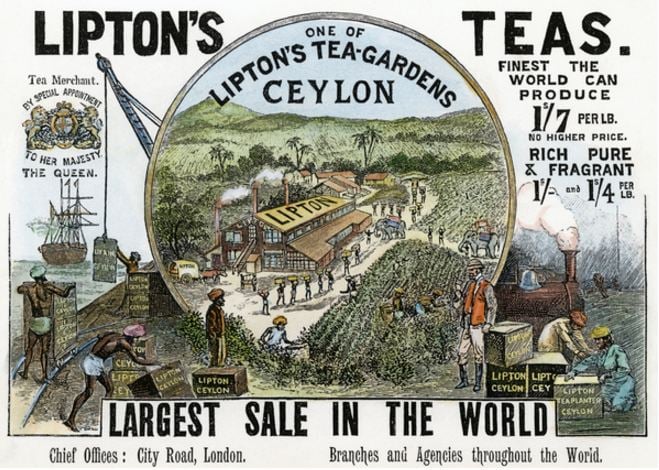
Celebrating 150 years of Ceylon Tea
2017 is a significant milestone for a crop that saved an economy from the brink of bankruptcy. It’s a favourite tea in royal courts and the choice cuppa for many of Hollywood’s elite. To honour the Sri Lankan brew, the Ceylon tea industry and the Government have planned a series of events in the country and worldwide this year for its 150th anniversary.

Happy tea pickers drink a cup of tea in Java, Indonesia, 1928 / The Netherlands Institute for Sound and Vision / Bridgeman Footage
The Origin of Tea
We can all give thanks to Chinese Emperor ShenNung for discovering tea 5000 years ago, albeit like many great things, he came across it by chance. He was boiling water when the leaves from a nearby plant called Camellia sinensis plant floated into the pot. He drank the mixture and proclaimed that it gave one ‘vigor of body, contentment of mind, and determination of purpose’. A strong testament to his assessment is that this surprise potion went on to become second only to water in worldwide consumption.
Tea bags are attributed to a US creator, although there is some dispute as to who exactly pioneered it. A New York tea importer, Thomas Sullivan, is often credited for using the small cloth bags sometime from 1904, because he was annoyed at the high cost of the tin boxes used to store tea. Contrarily, records also show that a US patent for a ‘tea leaf holder made out of fabric’ was granted in 1903. Either way, many dedicated tea fans believe it was one of the worst inventions of the 20th century as loose leaves are tastier than dunked bags. Thoughts?
About Ceylon Tea
The tea is grown in the island nation of Sri Lanka, which was known prior to independence as Ceylon. There is Ceylon black tea, white tea and green tea.

The Ceylon Tea Industry, Tamul Girl plucking a Tea Bush (engraving), English School, (19th century) / Private Collection / © Look and Learn / Illustrated Papers Collection / Bridgeman Images
Up until the 1860s, coffee was Ceylon’s main crop. However in 1869 a coffee-rust fungus (yes there is such a thing!) named Hemileiavastatrix killed the majority of the coffee plants and estate owners had to diversify into other crops in order to avoid total ruin and devastation. The owners of Loolecondera Estate had taken an interest in tea since the late 1850s and in 1866, James Taylor, a recently arrived Scot, was elected to lead the first sowing of tea seeds in 1867.

Tea Pickers in Ceylon, c.1900 (photo), English School, (20th century) / Private Collection / The Stapleton Collection / Bridgeman Images
James Taylor’s Success
Taylor had acquired some basic knowledge of tea cultivation in North India and made some initial experiments in manufacture, using his bungalow veranda as the factory and rolling the leaf by hand on tables. He fired the oxidized leaf on clay stoves over charcoal fires with the leaf on wire trays. The first batch of his teas were sold locally and were found to be delicious.
By 1872, Taylor had a fully equipped factory and a year later his first quality teas were sold for a significant price at a London auction. His dedication and perseverance meant that he was largely responsible for the early success of the tea crop in Ceylon. Between 1873 and 1890 production rose from just 23 pounds to a phenomenal 22,899.8 tonnes. The steam-ship Duke Argyll is recorded as the first vessel to carry Ceylon tea to England.
As a mark of gratitude for his achievements, a sculptured bust of James Taylor was unveiled at the Head Office of the Sri Lanka Tea Board on the 19th of January 2017.

Storage tin for ‘Direct Import China-India Ceylon Tea’, c.1900-20 (iron), German School, (20th century) / Deutsches Historisches Museum, Berlin, Germany / © DHM / Bridgeman Images
Economic Impact
It is the humidity, cool temperatures and rainfall of Sri Lanka’s central highlands that have favoured the production of such high quality tea. Tea production is currently one of the chief sources of foreign exchange for Sri Lanka; in 2013 it contributed over US $1.5 billion to the country’s economy. The crop supports approximately 20% of the population by providing over 1 million people with associated jobs. Sri Lanka is the world’s fourth-largest producer of tea and it was once the world’s leading exporter of tea, with 23% of the total world export, but it has since been surpassed by Kenya.
Glasgow-born millionaire grocer Sir Thomas Lipton visited Sri Lanka in 1890 and met with James Taylor to talk business. Lipton’s already established company then purchased Ceylon tea, distributing it through Europe and the USA. He was credited with bringing tea to the masses by offering value-for-money produce sold in convenient pre-packaged cartons. If Taylor was the father of tea in Ceylon, Lipton was the wily entrepreneur who commercialised it.

TEA ADVERTISEMENT, 1896 For Lipton’s Teas featuring the English Company’s plantations in Ceylon. / Photo © Granger / Bridgeman Images
Upcoming Events in 2017
- A first day cover and a series of stamps will be issued in February 2017, followed by the release of a Rs.10 coin by the month of August.
- From March – July a series of Education Fairs will be conducted in all seven tea producing regions to create awareness of the importance of teh tea industry and the significance of this historic event.
- A Global Ceylon Tea Party will be hosted by the country’s Diplomatic Missions worldwide on the evening of the 18th May.
- An authentic historical record of The 150 Years of Ceylon Tea will be published in a commemorative book and launched on the 14th of June.
- A Grand Charity Tea Auction will be held on the 14th of June, aiding the work force of the Plantation Sector.
- During July there will be an International Tea Festival with a host of tea related activities.
- In August an International Colombo Tea Convention expects around 300 overseas delegates
- A Plantation Sri Lanka 2017 Exhibition will be held from the 11th – 13th of August at Sirimavo Bandaranaike Memorial Exhibition Centre.
- There will be an award ceremony to recognise stakeholders in the Tea Industry, with awards going to Best Tea Plucker, Tea Taster and Tea Blender, as well as Best Manufacturer and the most Creative Innovator, etc.

Sri Lanka: The worn hands of a tea picker hold fresh tea leaves, near Nuwara Eliya, central Sri Lanka / Pictures from History / Rainer Krack / Bridgeman Images

